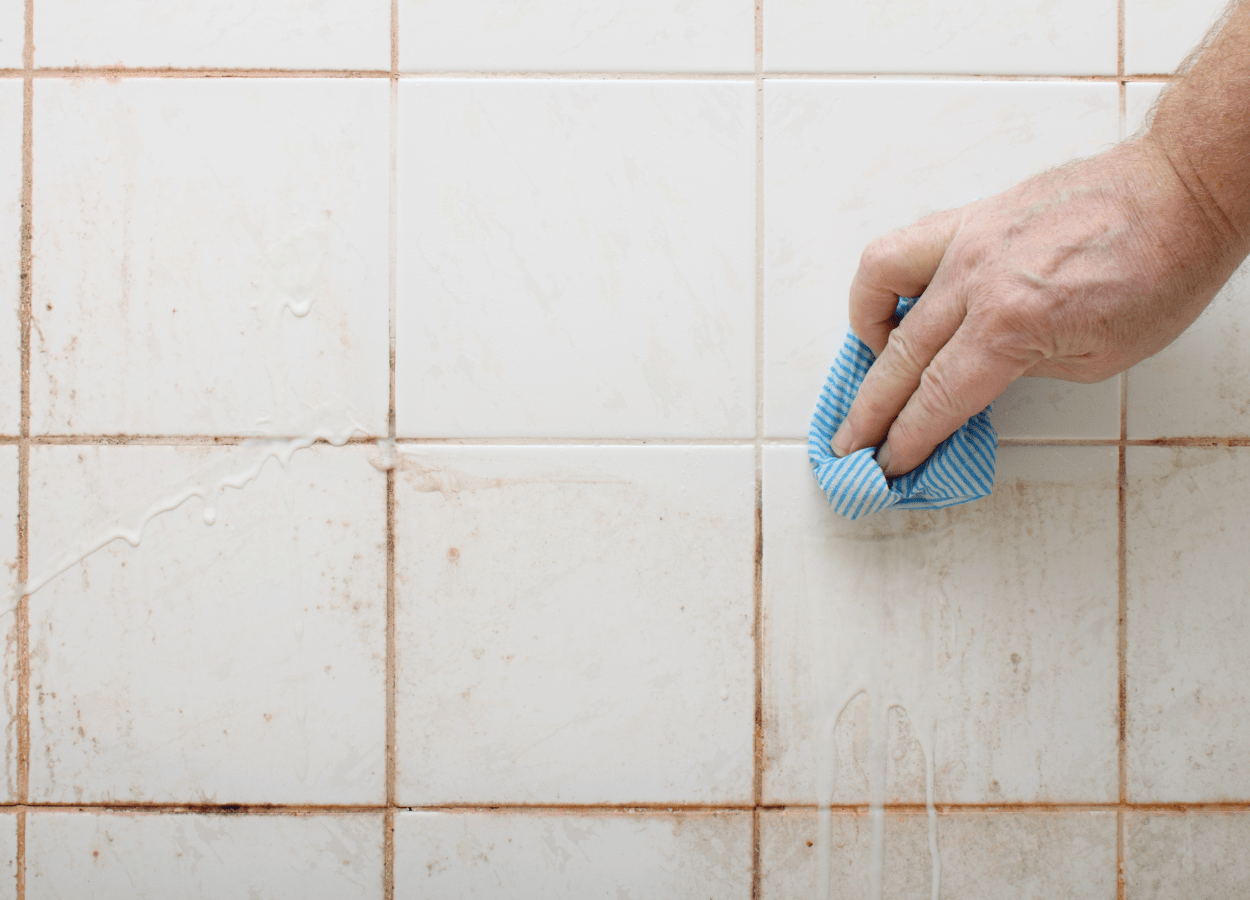How To Get Mould In Your Bathroom Under Control
Posted by Mark Peers

Mould is a common nuisance that can develop in bathrooms due to the warm, humid conditions of summer and the cold and poorly ventilated indoor environment of winter. However, not only is black mould creeping up walls and skirting boards unsightly, but inhaling or touching mould spores can also pose health risks like allergic reactions and respiratory issues. Here's how to safely carry out bathroom mould cleaning and prevent it from returning.
Protect Yourself When Cleaning Mould
When tackling bathroom mould cleaning, be sure to wear protective equipment like rubber gloves, a mask, and goggles. This will prevent skin contact or breathing in harmful spores while you clean. It’s important to avoid touching mould with your bare hands, and you'll also want to open any windows and turn on fans to ensure proper ventilation before and during cleaning so that moisture, mould spores, and fumes from cleaning products can all escape.
Effective Ways To Remove Bathroom Mould
An effective homemade solution for removing mould is to mix equal parts white vinegar and water in a spray bottle.
-
Lightly spray the mouldy areas and let the solution sit briefly before scrubbing.
-
Use an old toothbrush to gently scrub the mould away from tiles, grout, and other bathroom surfaces.
-
Rinse the area thoroughly afterwards to wash off any remaining solution and spores.
-
Any cleaning tools used for mould removal should be discarded to prevent re-contamination.
For stubborn mould spots, a stronger commercial bleach-based bathroom cleaner may be required. Carefully follow all directions and safety precautions when using commercial cleaners, and be sure to open windows, run fans, and use gloves during use. Harsh chemical fumes can be dangerous in enclosed spaces, so thoroughly rinse any surfaces after scrubbing off mould growth.
Do A Final Check For Hidden Mould
Once you have cleaned all visible mould, be sure to do a final inspection of the entire bathroom. Look in corners, along tiles, seals, and any textured areas for hidden spots you may have missed. Catching and removing any remaining mould will help prevent recurrence. Mould can be sneaky and come back quickly if any spores linger, so make sure to clean bathroom tiles of mould diligently.
Stop Mould Returning With Preventative Measures
While thorough cleaning deals with existing mould, prevention is the answer to how to stop mould in bathrooms.
-
First, tackle moisture levels in the bathroom. Install an extractor fan if you don't have one, and open windows or run the fan after showering, even in the winter, and in the summer, leave the window open as much as possible. Wiping down bathroom walls and surfaces after use will also remove excess condensation before mould develops.
-
Secondly, cleaning bathroom tiles, grout, and seals regularly will also help prevent mould growth. Use a squeegee when cleaning shower glass doors to eliminate pooled water. Allow bath mats, towels and shower curtains to fully dry between uses and wash them frequently. You should also repair any leaky plumbing or seals that allow moisture into walls as soon as you notice them.
-
You can also combat moisture by adding houseplants that absorb humidity, like ferns, ivy, and orchids, while dehumidifiers will maintain optimal indoor humidity levels.
How To Stop Mould In Bathrooms For Good With Advanced Showers
Dealing with bathroom mould takes diligence but is very manageable if caught early. Be proactive by doing regular checks along all bathroom grout lines, seals, corners and textured areas for any faint mould growth. Doing bathroom mould cleaning quickly before it has a chance to spread, makes it easier to stop it from recurring.
Find Out More
If you need help getting rid of persistent mould issues, contact Advanced Showers. Our mould-resistant shower pods are an all-in-one solution designed to prevent leaks and moisture build-up. Contact us today, and we can install your new easy-to-clean shower cubicle in just a few hours, and you can wave goodbye to all your mould issues.
Image Source: Canva





